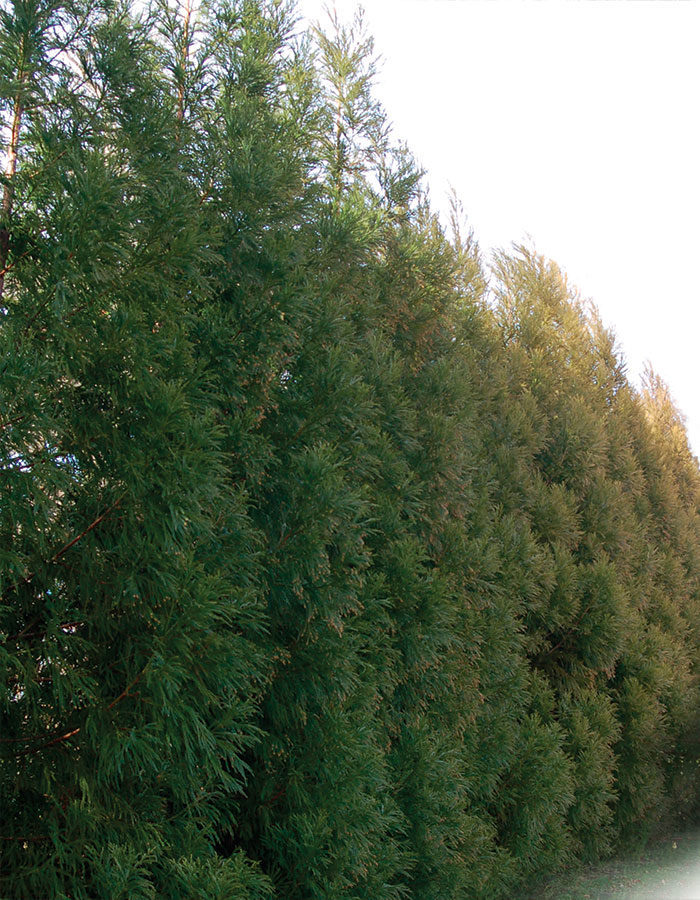
Why do we need hedges? Well, for one thing, they create privacy while clearly defining specific garden areas. Yet one mention of the word “hedge” and many gardeners cringe, envisioning a row of oversheared yews or a stand of pest-ridden hemlocks. But there’s no reason that you have to sacrifice good looks or health for function. Many conifers, broad-leaved evergreens, and even select deciduous shrubs offer gardeners the opportunity to craft an aesthetically pleasing yet functional hedge.
Screens and hedges are composed of one or more rows of shrubs or trees forming a living fence or boundary. They can hide unsightly views, create sound barriers, and shelter the garden from extreme environmental conditions, such as wind and fluctuating temperatures. The following plants make great living barriers and create a sense of enclosure and privacy in the landscape.
Conifers create large-scale, year-round boundaries
Conifers or needled evergreens provide a beautiful, fine texture. Their glowing hues of emerald green, blue, or gold brighten the landscape, especially in winter. Conifers, in addition, exhibit a strong, vertical, and often pyramidal growth habit, which gives them a unique presence. Although they may seem like an odd choice for hedges because of their large size, they are ideal for establishing a visual boundary in the landscape.
It’s got soft texture and disease resistance
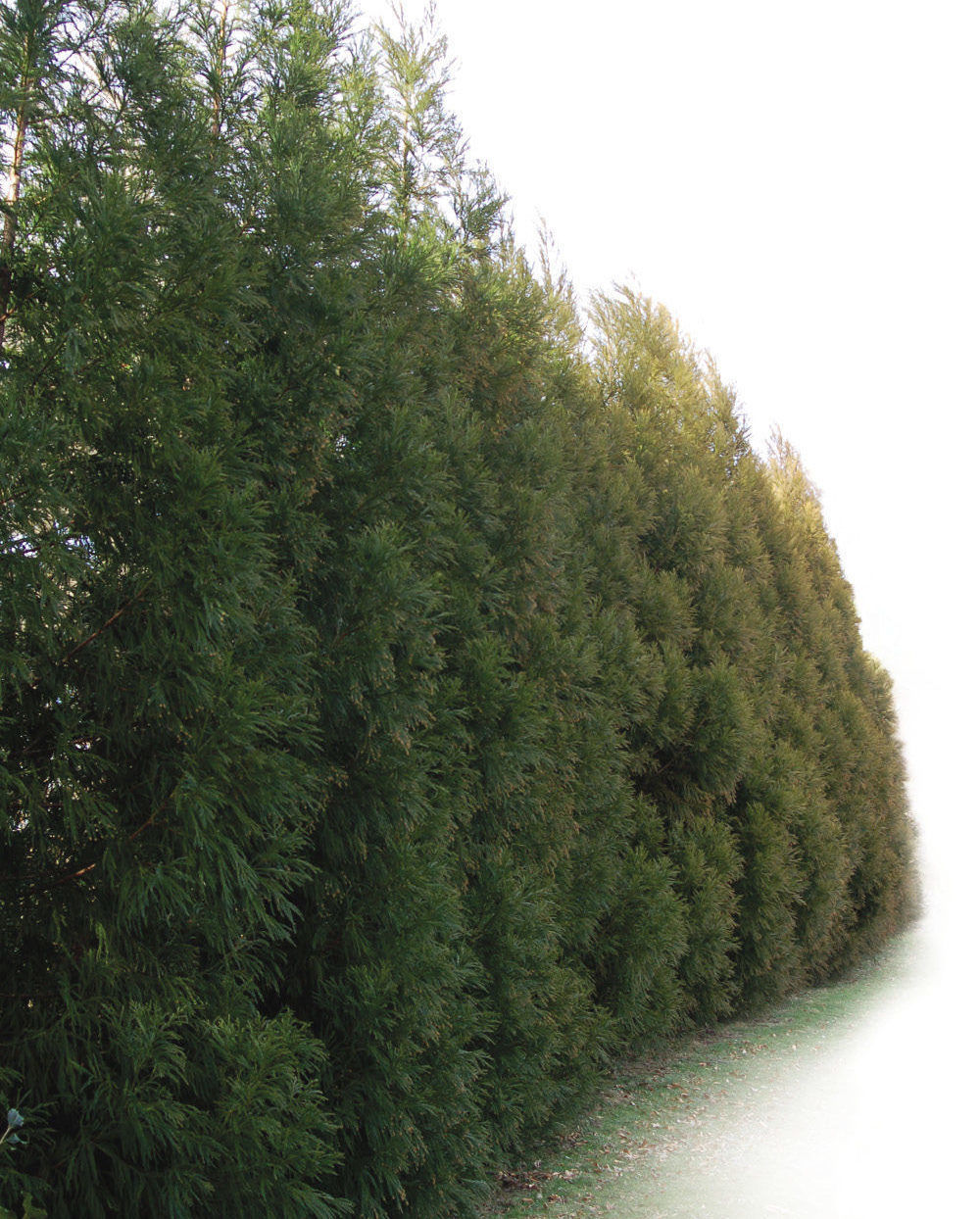
Name: ‘Yoshino’ Japanese cedar (Cryptomeria japonica ‘Yoshino’)
Japanese cedar is an unusual conifer with long strands of short, needlelike green leaves arranged spirally along slender stems. As a young tree, its habit is dense and upright, but it eventually transforms into a more open, pyramidal form. ‘Yoshino’ is my favorite cultivar because of its overall vigor and four-season, emerald green leaves. Mature plants have a peeling bark that looks similar to that of a cedar or juniper. Occasional pruning of ‘Yoshino’ Japanese cedar will keep it dense and neat. As it matures, the inner branches and leaves will often brown out and must be removed. This plant makes an excellent tall screen and should be grown informally (in other words, leave it alone to grow naturally and refrain from trimming it often). It can also be grown as single-specimen tree and still block a view. The best thing about this conifer is that it looks like and can be used in the same manner as hemlock (Tsuga spp. and cvs., Zones 3–9), making it an excellent alternative that won’t get woolly adelgid.
USDA Hardiness Zones: 5–8
Size: 30 to 35 feet tall and 15 feet wide
Conditions: Full sun to partial shade; moist, well-drained, acidic soil
A spruce with cones that attract a lot of attention
Name: ‘Gowdy’ Oriental spruce (Picea orientalis ‘Gowdy’)
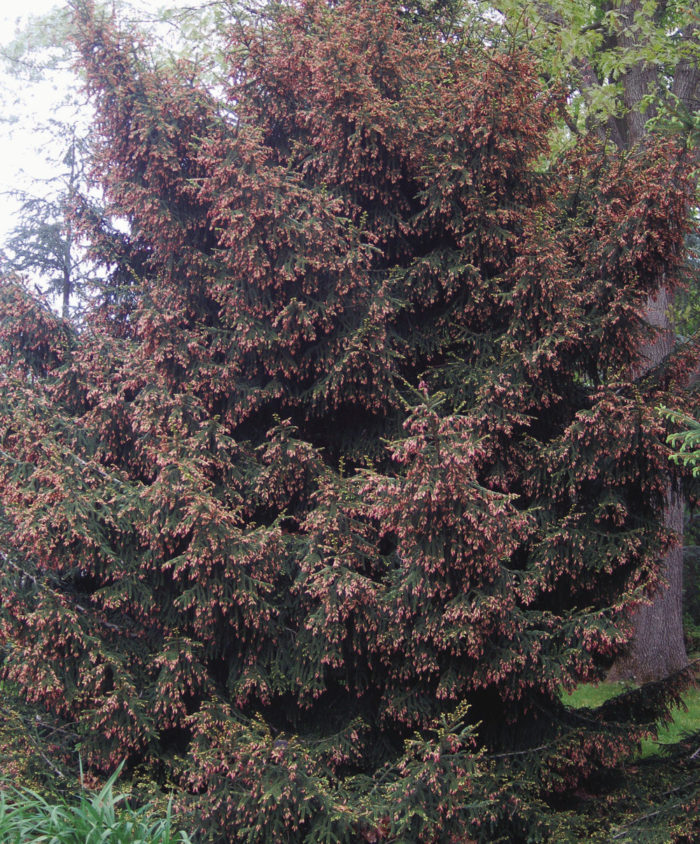
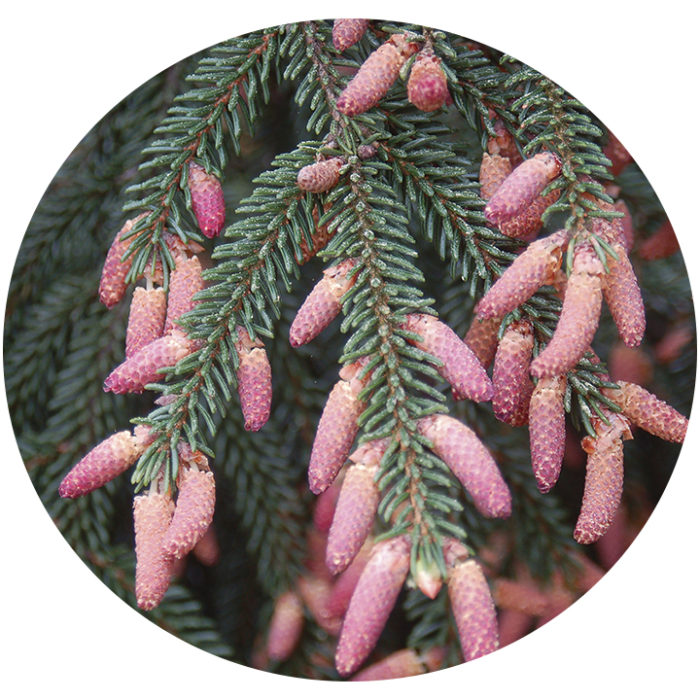
Zones: 4–7
Size: 8 to 10 feet tall and 4 to 5 feet wide
Conditions: Full sun to partial shade; moist, well-drained soil
An arborvitae that you’ll love but the deer won’t
Name: Western red cedar (Thuja plicata and cvs.)
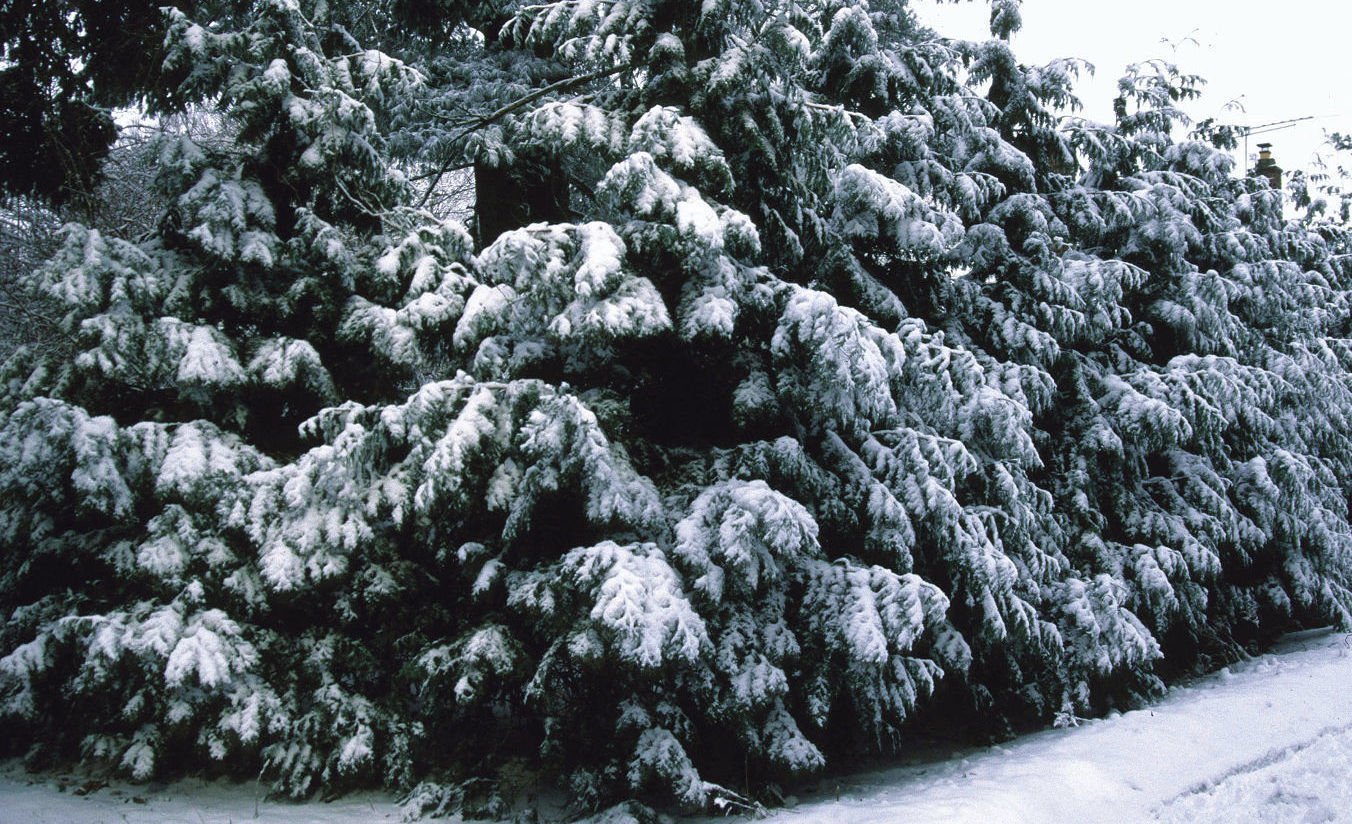
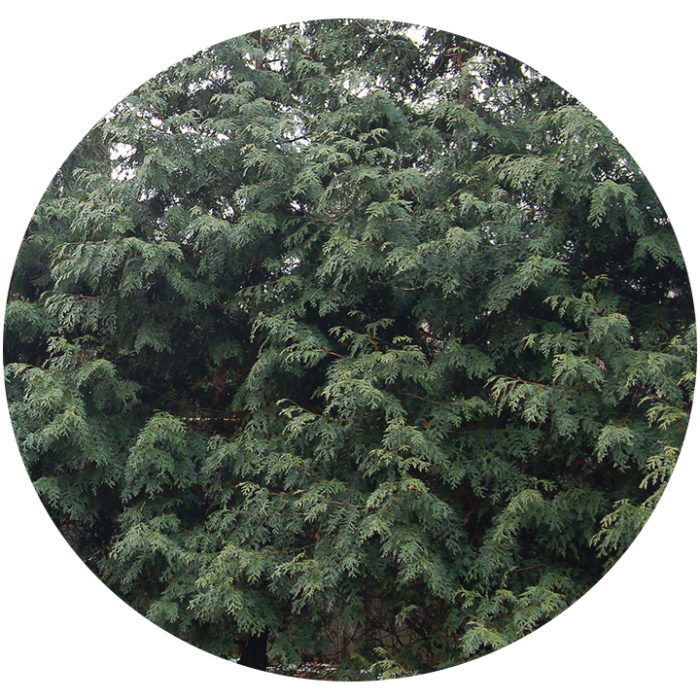
American arborvitae (Thuja occidentalis and cvs., Zones 2–7) has long been a popular favorite for hedging; however, western red cedar, a lesser-known species native to the Pacific Northwest, is far superior. This elegant evergreen has a graceful yet durable branching structure and lush, emerald green leaves (right). The main reason western red cedar is superior to American arborvitae is its ability to withstand snow, ice, wind, and other harsh elements. This evergreen also tolerates poor soils, exposed sites, drought, and even shade. If these reasons aren’t good enough for you to run out and buy this plant, try this: It is relatively deer resistant—far more than American arborvitae, pine, fir, and most other common conifers. Use western red cedar as a tall, dense screen to block the view of your neighbor’s house.
Zones: 5–7 (and possibly warmer parts of Zone 4)
Size: 50 feet tall and 30 feet wide (can be maintained at a smaller size with regular and judicious pruning)
Conditions: Full sun to partial shade; moist, well-drained soil
Broad-leaved evergreens make a perfect four-season fence
If you’re looking for year-round privacy from your hedge but want a plant that stays smaller and more compact than a conifer, then consider a broad-leaved evergreen. These plants reach a mature size quickly and flower readily; some even have berries, which give them added appeal. Broad-leaved evergreens are also usually less expensive than conifers.
A low-maintenance shrub with shiny foliage
Name: Inkberry (Ilex glabra and cvs.)
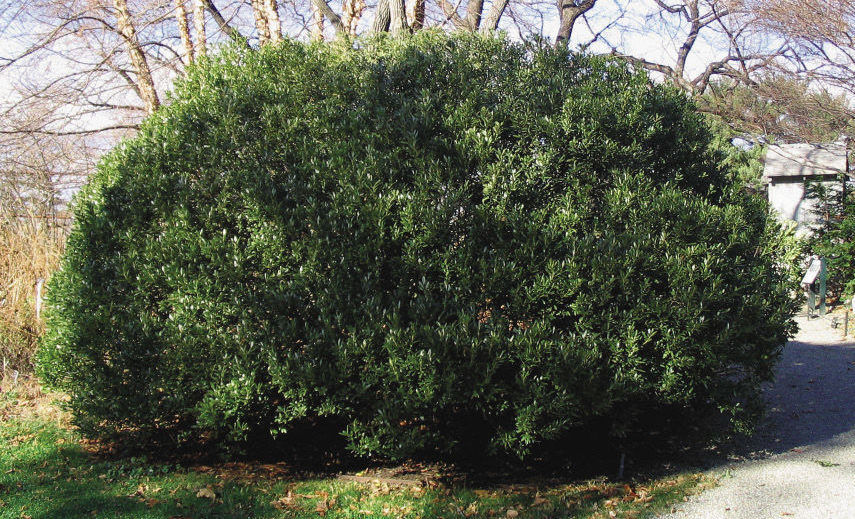
Inkberry is a member of the holly family, but unlike traditional hollies, it has glossy, lush, dark green leaves without spines. Like all hollies, however, only female plants produce berries. The small, jet black fruit ripen in fall and will persist through much of the winter. Inkberry is extremely resilient, adapting to harsh, exposed seashores as easily as it does to shady woodland gardens. It’s great planted as a formal or informal hedge, or in a large mass to form a screen.
Zones: 5–9
Size: 6 to 8 feet tall and wide
Conditions: Full sun to partial shade; acidic, moist, well-drained soil
This one has it all—flowers, fruit, and fall color
Name: Heavenly bamboo (Nandina domestica and cvs.)
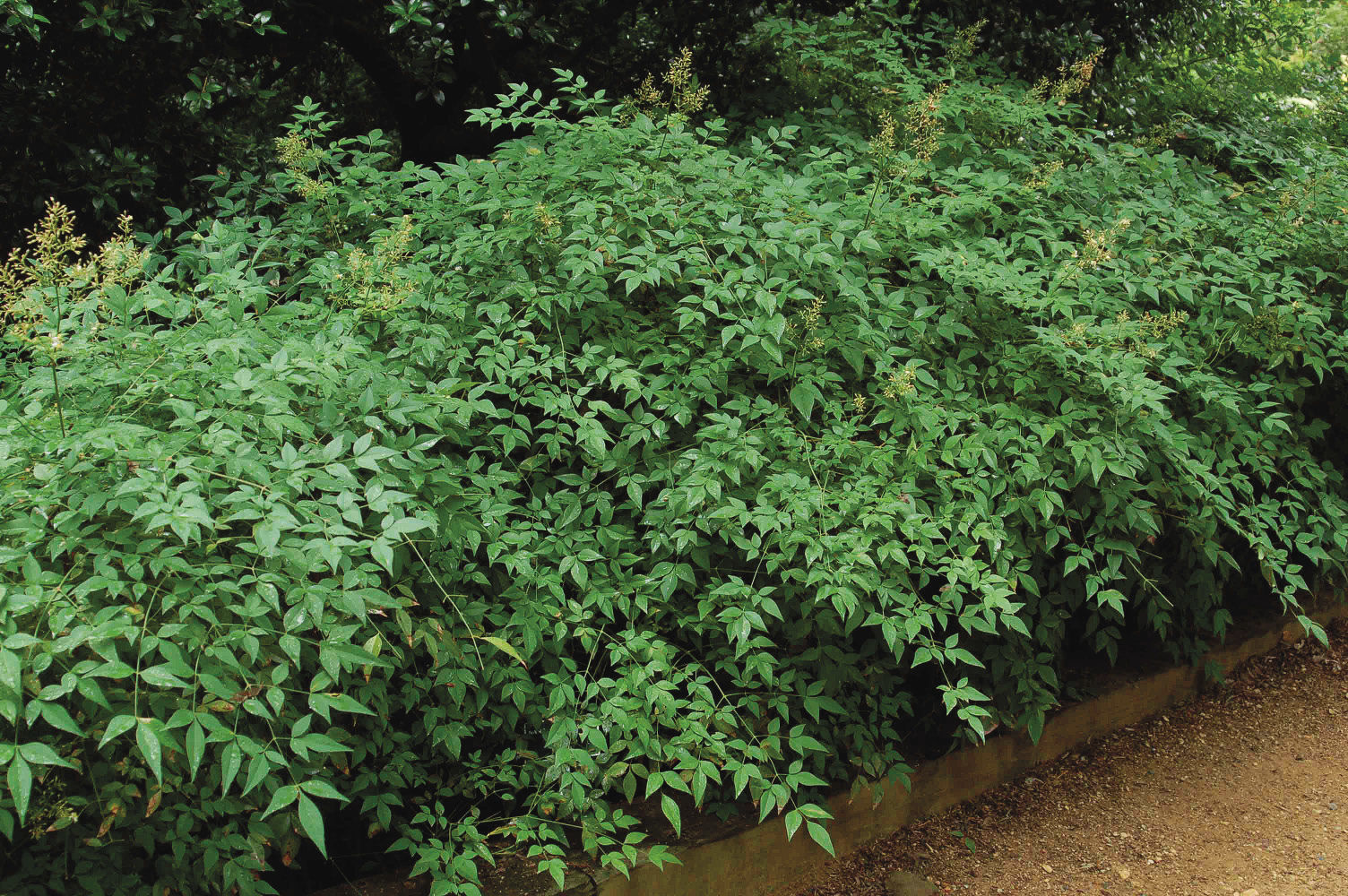
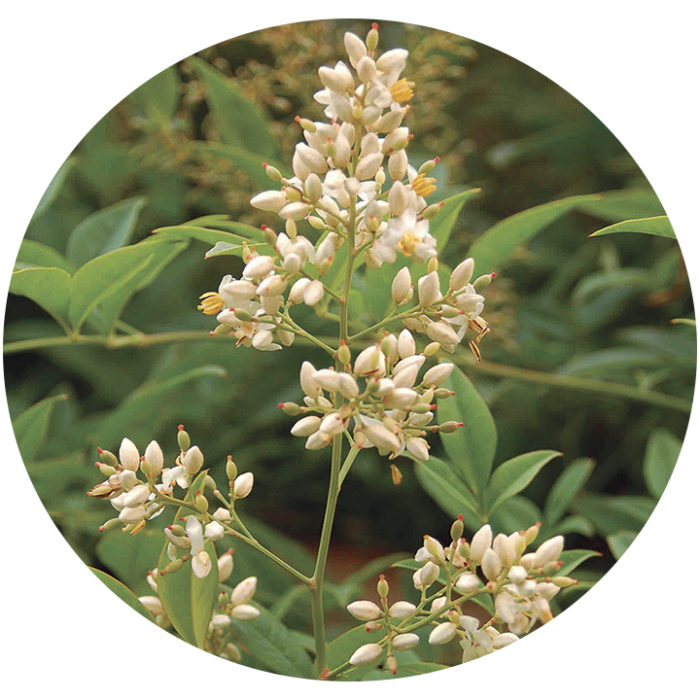
Unlike aggressive Asian bamboos, heavenly bamboo is actually quite tame, forming neat clumps. This makes it ideal for a low or medium-size informal hedge. The striking new growth ranges from coppery red to pink, changing to soft blue-green with age. The foliage will often turn shades of reddish maroon in cool weather (in harsh winters, plants may lose some or all of their foliage). In late spring to early summer, small white flowers form at the ends of the stems (right), followed by large, bright red fruit clusters that ripen in autumn and persist through winter. Heavenly bamboo may need to be pruned annually to maintain a dense habit, especially in shade. Pruning should be done while plants are dormant in late winter or early spring. This shrub thrives in moist, well-drained soil, and although it prefers full sun to partial shade, it will tolerate dense shade.
Zones: 6–11
Size: 6 to 8 feet tall and up to 5 feet wide
Conditions: Full sun to partial shade; moist, well-drained soil
Deciduous shrubs create unobtrusive screens
One of the main qualities a plant needs for it to be an effective hedge or screen is a dense growth habit, and many deciduous shrubs have this trait. Even in winter, when these shrubs have no foliage, their thick branching habit will create a visual barrier. As with many evergreens, several common deciduous or semievergreen shrubs, such as privet (Ligustrum spp. and cvs., Zones 3–9), are overused. If you’re looking to create an informal screen or would like to use a plant that offers more than just predictable green leaves, then try these options, which have attractive foliage as well as interesting blooms.
An underappreciated overachiever
Name: Chinese neillia (Neillia sinensis)
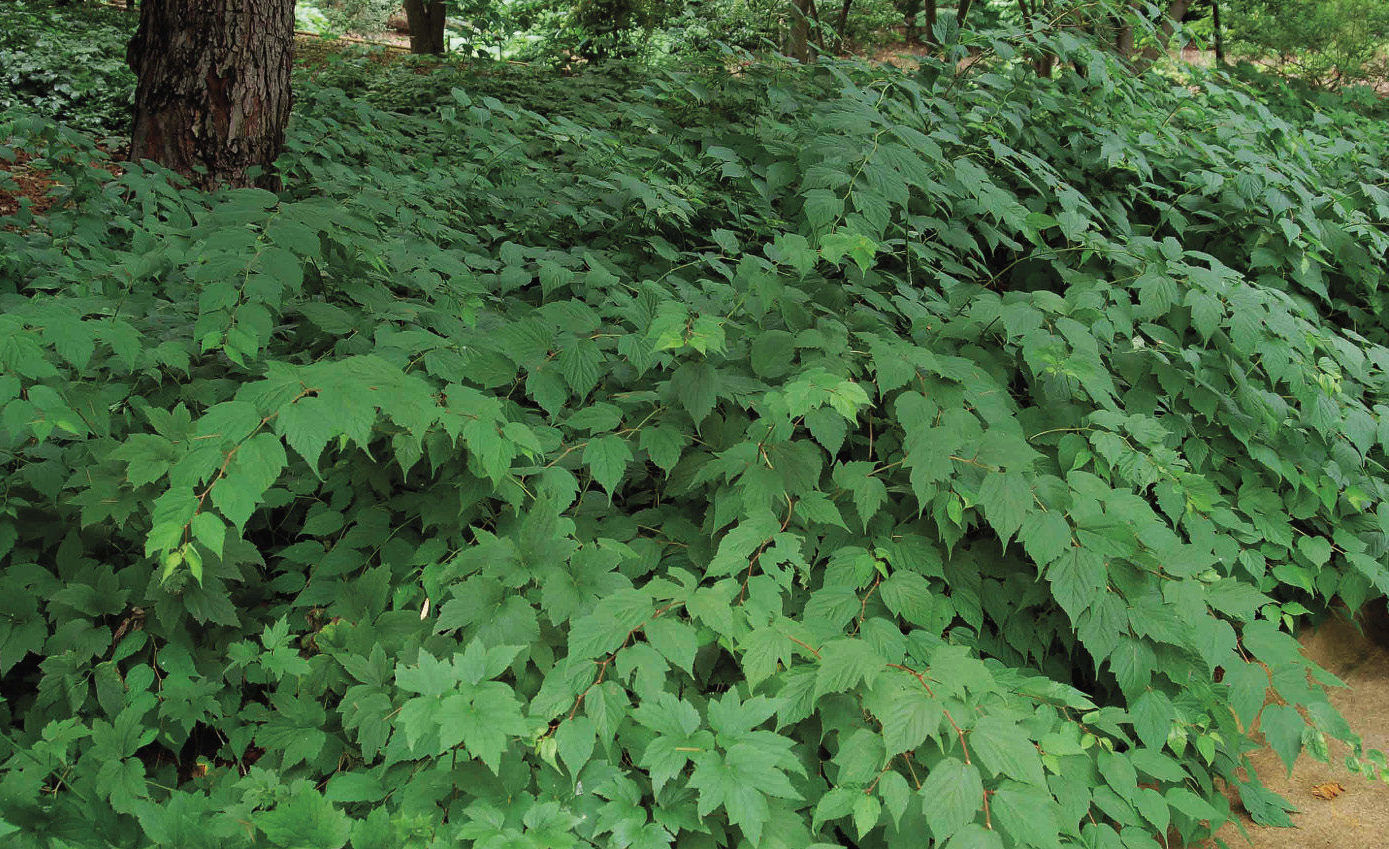

An unusual flowering shrub, Chinese neillia is rarely used in gardens. This is unfortunate because its dense, upright, spreading habit makes it perfect for screening. The dangling pink flower clusters in midspring (right) and lustrous, serrated, dark green leaves provide interest all through the growing season. As an added feature, the flaking bark on older stems is especially stunning in winter. Chinese neillia looks best when used as an informal hedge or in a mass planting. You can hand-prune soon after flowering has stopped to keep plants in check, or selectively prune in early spring to remove older stems and stimulate vigorous growth from the base.
Zones: 5–7
Size: 6 feet tall and wide
Conditions: Full sun to partial shade; moist, well-drained soil
It offers delicate good looks and unbeatable hardiness
Name: Cutleaf stephanandra (Stephanandra incisa and cvs.)
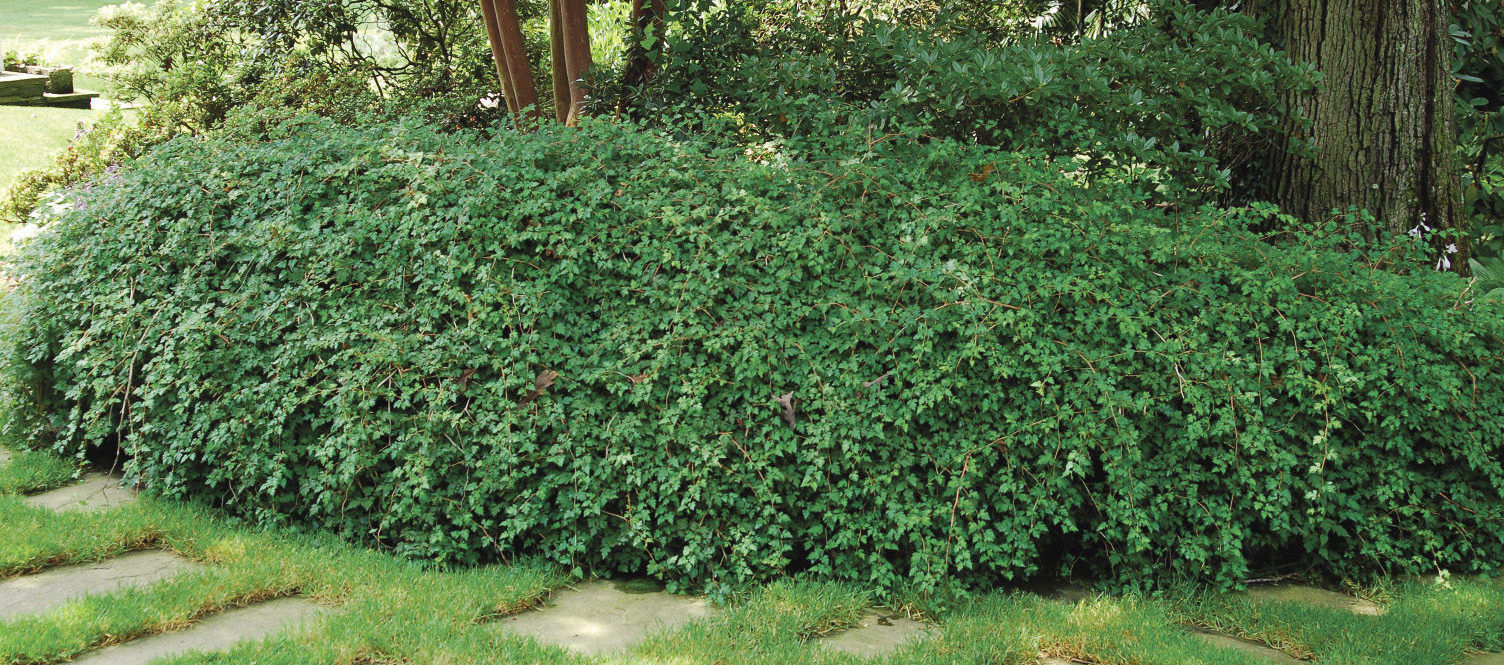
A graceful, cascading habit; fine foliage; and delicate spring flowers make cutleaf stephanandra a wonderful plant. The dense, irregular branching habit is attractive even in winter. Its small, finely dissected leaves emerge reddish bronze before changing to medium green. Although often not overwhelming in autumn, the leaves change to shades of yellow or orange, or become tinged with reddish purple. In spring, small clusters of creamy white flowers emerge and persist for several weeks. Regular pruning of cutleaf stephanandra is not required, but occasionally cutting back poorly shaped shrubs to 6 inches above the ground will rejuvenate them. Avoid shearing the plant into formal shapes because this will compromise its naturally flowing growth habit. Cutleaf stephanandra is ideal when used as an informal hedge. One notable cultivar is ‘Crispa’, which is dwarf, only reaching 2 to 3 feet in height with a slightly wider spread.
Zones: 3–7 (may tolerate Zone 8 if it receives adequate moisture in a shady location)
Size: 4 to 8 feet tall and wide
Conditions: Full sun to partial shade; moist, well-drained acidic soil
This bold bloomer shines when the rest of the garden is dormant
Name: Buttercup winter hazel (Corylopsis pauciflora)
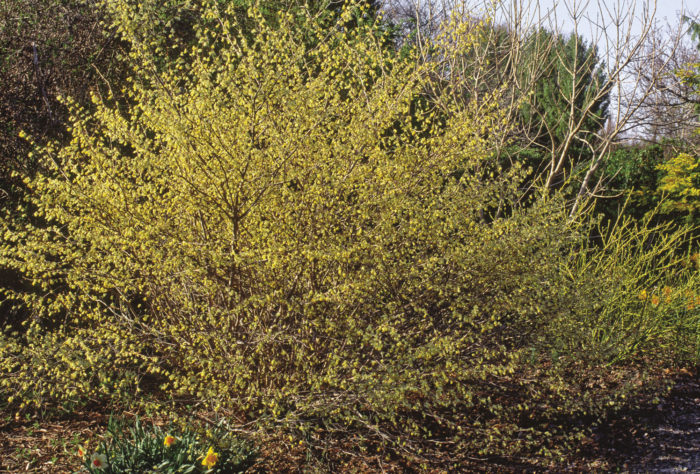
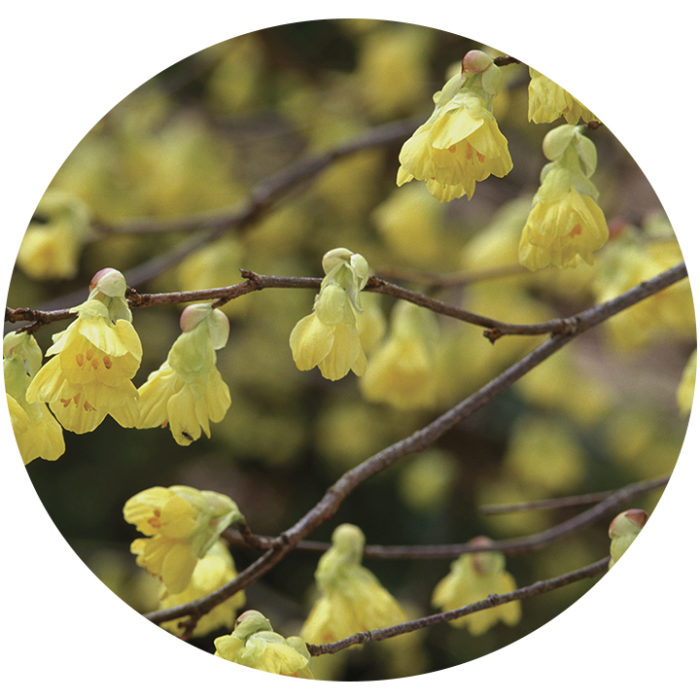
Zones: 6–9
Size: 5 to 6 feet tall and 6 to 8 feet wide
Conditions: Full sun to partial shade; rich, moist, acidic, well-drained soil
Choose a Hedge Formation
You can maintain hedges formally or informally. Formal hedges are pruned into rounded shapes or angular lines. Informal hedges are not pruned regularly but left to grow naturally. Maintaining hedges informally creates healthier, more productive plants. Here are three types of hedge arrangements, all of which highlight the plant’s natural beauty.
Grouping
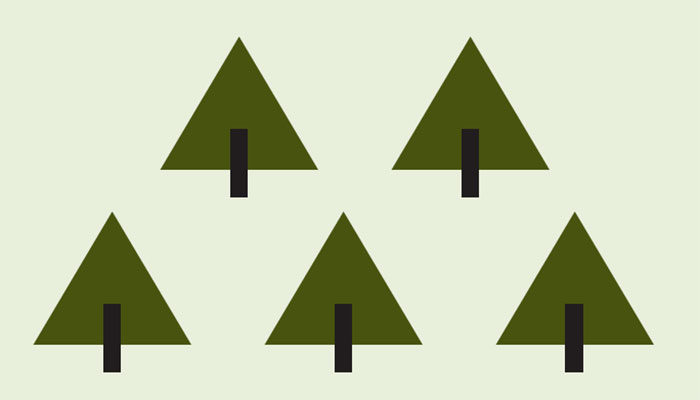
| Pros
• Looks nice while plants fill in (no gaps) • Discourages accidental overcrowding |
Cons
• Involves more labor (double row) • Costs more money (more plants) |
Row

| Pros
• Covers a large area with fewer plants • Presents a neat and orderly appearance |
Cons
• Takes time to fill in • Is easy to miscalculate spacing at initial planting |
Solo
| Pros
• Involves less labor • Costs less money |
Cons
• Covers a small area • Takes time to fill out |
 |
Vincent Simeone is director of the Planting Fields Arboretum State Historic Park in Oyster Bay, New York.
Photos, except where noted: courtesy of Vincent A. Simeone
Sources
- Arrowhead Alpines, Fowlerville, Mich.; 517-223-3581; arrowheadalpines.com
- Cloud Mountain Farm, Everson, Wash.; 360-966-5859; cloudmountainfarm.com
- Fedco Seeds, Waterville, Maine; 207-873-7333; fedcoseeds.com
- Fraser’s Thimble Farms, Salt Spring Island, B.C.; 250-537-5788; thimblefarms.com
Fine Gardening Recommended Products

Gardener's Log Book from NYBG
Fine Gardening receives a commission for items purchased through links on this site, including Amazon Associates and other affiliate advertising programs.

A.M. Leonard Deluxe Soil Knife & Leather Sheath Combo
Fine Gardening receives a commission for items purchased through links on this site, including Amazon Associates and other affiliate advertising programs.

Ho-Mi Digger - Korean Triangle Blade
Fine Gardening receives a commission for items purchased through links on this site, including Amazon Associates and other affiliate advertising programs.



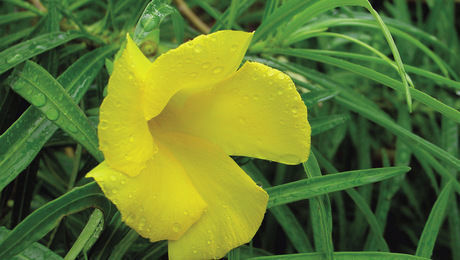














Comments
Every one of these plants are recommended for moist sites. What about plantings for dry, sandy soils? There must be hedges that fit this need available.
I am surprised to see nandina on this list--it is on the invasive species lists in many states, and all parts of it are toxic. Berries will kill birds that eat them (like cedar waxwings, mockingbirds and robins, although they prefer other foods). How about ninebark? It's a nice, tough native shrub that won't hurt anything.
Log in or create an account to post a comment.
Sign up Log in